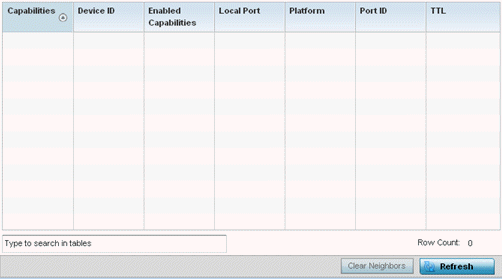LLDP or IEEE 802.1AB is a vendor-neutral Data Link Layer protocol used by network devices for advertising of (announcing) their identity, capabilities, and interconnections on a IEEE 802 LAN network. The protocol is formally referred to by the IEEE as Station and Media Access Control Connectivity Discovery.
To view a network's Link Layer Discovery Protocol statistics:

| Capabilities | Displays a capabilities code as either Router, Trans Bridge, Source RouteBridge, Switch, Host, IGMP or Repeater. |
| Device ID | Displays the configured device ID or name for each device in the table. |
| Enabled Capabilities | Displays which device capabilities are currently enabled. |
| Local Port | Displays the local port name (access point physical port) for each LLDP capable device. Supported access point models have unique port configurations. |
| Platform | Displays the model number of the LLDP capable device interoperating with the access point. |
| Port ID | Displays the identifier for the local port. |
| TTL | Displays the TTL for each LLDP connection. |